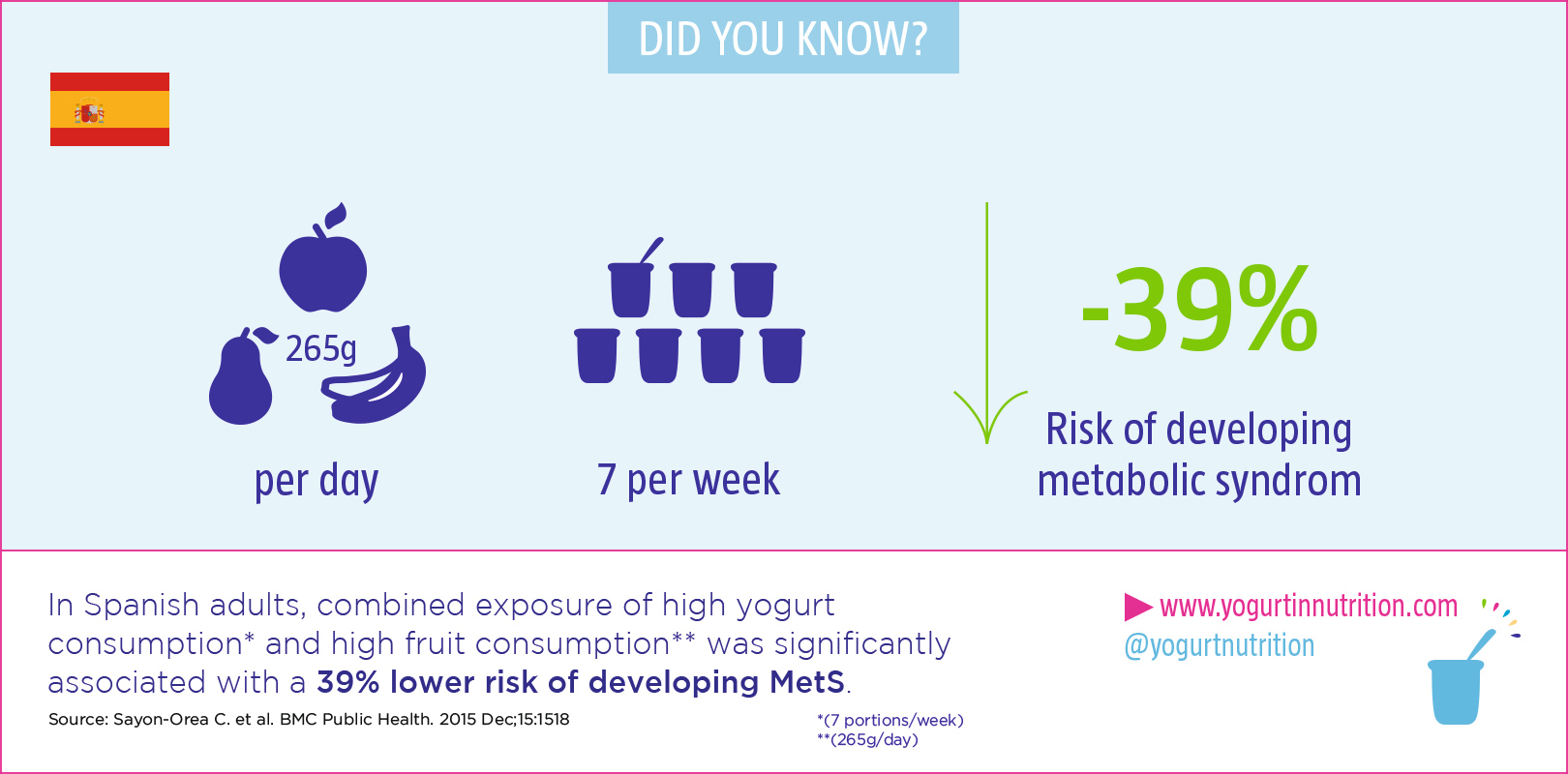In the context of the 4th Yogurt Summit in April 2016 in San Diego, we publish each week a key-study of one of the guest speakers. This week we introduce Angelo Tremblay: This Canadian study found that yogurt is an important contributor to the Prudent dietary pattern. Also, yogurt consumption may be associated with lower anthropometric indicators and a more beneficial cardio-metabolic risk profile in overweight/obese individuals.
According to previous research, dairy food consumption is generally associated with better health. Observational studies have shown that dairy product consumption is inversely related to the incidence of several cardio-metabolic diseases. Yogurt is particularly interesting due to added active bacterial cultures, high protein content, and vitamins and minerals such as calcium, magnesium, potassium, phosphorus, and vitamin D.
The Prudent dietary pattern vs Western dietary pattern
This study examined whether yogurt consumption is associated with a healthier dietary pattern and with a better cardio-metabolic risk profile among healthy individuals
To do this, the scientist applied a 91-item food frequency questionnaire, to 664 subjects from the INFOGENE study. Anthropometric measures helped to classify the subjects by BMI, and blood samples were collected to know the participant’s lipids levels (cholesterol, triglycerides, HDL and LDL) as well as their fasting insulin and glucose levels.
After analysis two dietary patterns were retained: the Prudent and the Western. Yogurt was part of the Prudent dietary pattern also characterized by higher intakes of vegetables, fruits, nuts, non-hydrogenated fats, yogurt, legumes as well as fish and other seafood, while the Western dietary pattern was rather characterized by higher intakes of fried foods, condiments, processed meats, refined grains, snacks, red meats, pizza, beer, high-fat dairy products (ice cream, cheese, whole milk, cream), regular soft drinks, mayonnaise, and hard liquor.
Yogurt: a key contributor to the Prudent dietary pattern and healthy eating
Yogurt was a significant contributor to the Prudent dietary pattern. Moreover, yogurt consumption was associated with lower body weight, waist-to-hip ratio, and waist circumference and tended to be associated with a lower BMI. Consumers had lower levels of fasting total cholesterol and insulin. Consumers of yogurt had a positive Prudent dietary pattern mean score, while the opposite trend was observed in non-consumers of yogurt. Overweight/obese individuals who were consumers of yogurts exhibited a more favorable cardio-metabolic profile characterized by lower plasma triglyceride and insulin levels than non-consumers within the same range of BMI.

















